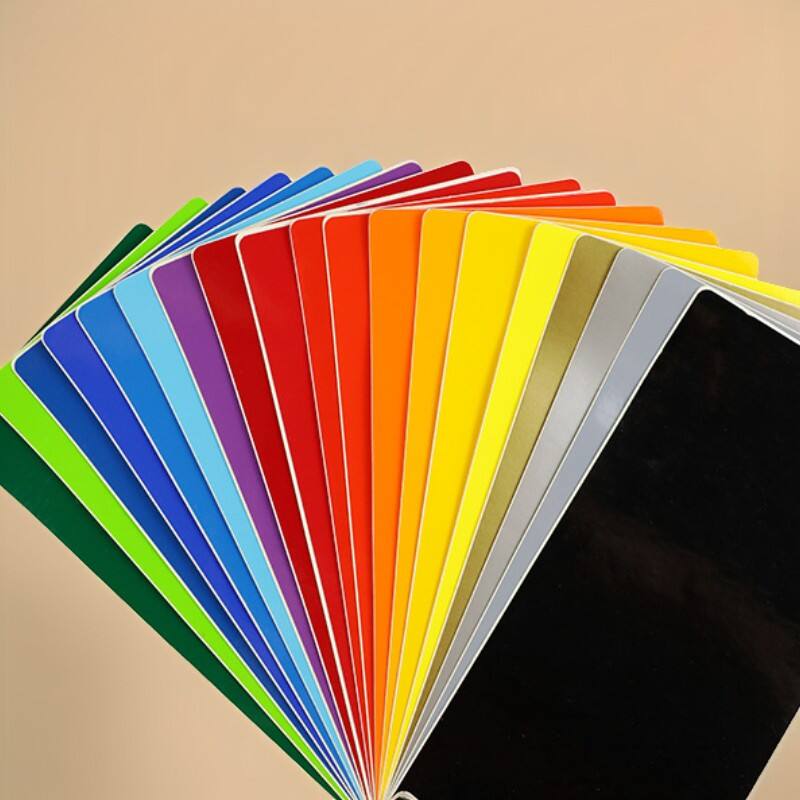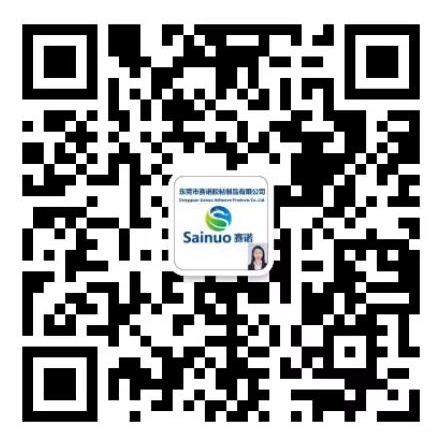Advancements in Self-Adhesive Film Technology for Industrial Applications
Key Technological Advancements in Self-Adhesive Films
Nanotechnology Integration for Enhanced Bonding
Nanotechnology is revolutionizing the self-adhesive films industry by significantly boosting their adhesive properties. This technology leverages nanomaterials, such as nanoparticles and nanotubes, to create films with improved bonding strength and adhesion properties. For example, in a study published in the "Journal of Adhesion Science and Technology," nanoparticles were shown to enhance tensile strength and temperature resistance, making them ideal for demanding applications. Nanostructured adhesives not only adhere better to challenging surfaces but also offer enhanced durability. As these innovations continue to evolve, they promise to redefine the performance benchmarks of adhesive films, bringing significant benefits to various industrial sectors.
Smart Adhesive Solutions with Temperature Adaptability
Incorporating smart adhesive solutions into self-adhesive films marks a significant leap in technology, allowing these films to respond to temperature changes. Such smart adhesives have found applications in industries where temperature control is critical, like automotive and electronics. For instance, these films adapt to varying thermal conditions, ensuring consistent grip and increased reliability in extreme environments. A study documented in "Advanced Functional Materials" revealed how smart adhesive films, through temperature adaptability, boast improved lifespan and functionality in harsh conditions. This adaptability not only enhances product performance but also reduces waste, achieving a balance between efficiency and environmental responsibility.
High-Performance Films for Extreme Environments
High-performance films are engineered to withstand extreme environments, including significant temperature fluctuations and exposure to harsh chemicals. These films are particularly beneficial in industries such as aerospace and manufacturing, where resilience and durability are non-negotiable. For example, films with advanced chemical formulations are used in aerospace to protect components from corrosive substances and intense heat. Real-world data conforming to the effectiveness of these films, like those published in the "Journal of Polymer Science," highlight their ability to perform under pressure without compromising structural integrity. By leveraging these advancements, industries can ensure operational continuity even in the most demanding settings.
Industrial Applications Driving Innovation
Automotive: Lightweighting and Durability Demands
The automotive industry is increasingly focusing on incorporating lightweight materials to enhance fuel efficiency and meet regulatory standards for emissions. Self-adhesive films are playing a critical role in parts manufacturing due to their lightweight nature and high durability. For instance, they are used in bonding components like interior panels and exterior trims. This shift not only supports sustainable practices but also improves vehicle performance. A study by the International Council on Clean Transportation highlighted that using lightweight materials can enhance fuel economy by as much as 5-10%, significantly lowering the vehicle's carbon footprint.
Flexible Packaging Solutions with Self-Adhesive Kraft Paper
The surge in demand for sustainable solutions has placed self-adhesive kraft paper at the forefront of flexible packaging innovations. These papers provide eco-friendly alternatives by eliminating the need for traditional adhesives. Sectors such as food and consumer goods are embracing these solutions, leveraging kraft paper’s biodegradability and strong adhesion. For instance, a transition to kraft paper-based packaging has been associated with reduced material waste and improved recyclability within the packaging industry. Case studies, such as those from leading food brands, showcase enhanced operational efficiency and heightened brand reputation through the adoption of sustainable packaging practices.
Electronics Assembly Using Clear Self-Adhesive Films
Clear self-adhesive films are becoming increasingly integral in electronics assembly due to their high transparency and ease of application. These films facilitate enhanced aesthetics and protection of electronic components, thereby broadening their usage. Markets indicate a growing preference for these films, driven by the burgeoning electronics sector and innovations in material sciences. According to data, the global market for clear adhesive applications in electronics is poised for significant growth, boasting a projected valuation increase by several billion dollars over the next decade. This trajectory underscores their critical role in ensuring product durability and consumer satisfaction in electronics manufacturing.
Colourful Self-Adhesive PVC Material: A Case Study
Technical Specifications: Facestock and Adhesive Composition
The Colourful Self-Adhesive PVC Material is crafted with precision to ensure high performance in various applications. The facestock is composed of PVC material with a basis weight of 110 g/m², exhibiting superior durability and flexibility. The adhesive system is formulated with a special permanent acrylic-based adhesive, providing strong adherence to various surfaces. This composition distinguishes itself from traditional adhesive options, which may not offer the same level of versatility and long-term performance.
Multi-Sector Applications: Retail Labels to Outdoor Signage
The application versatility of the Colourful Self-Adhesive PVC Material makes it invaluable across multiple sectors. From retail to construction, this material is utilized for product labeling, indoor and outdoor signage, and promotional items. In retail settings, it enhances brand visibility through colorful and durable labels. In signage, its robust nature ensures long-lasting performance against environmental elements. These applications highlight the market's aesthetic and functional demands, as industries seek materials that offer both visual appeal and effectiveness.
Sustainability Trends in Adhesive Film Technology
Recyclable Adhesive Paper Solutions
The adhesive film industry is increasingly prioritizing sustainability by developing recyclable adhesive paper solutions. This shift is driven by environmental concerns and the rising demand for eco-friendly products. Several manufacturers have successfully integrated recyclable materials into their self-adhesive film production, showcasing the industry's commitment to reducing environmental impact. For instance, companies are designing adhesive films that can seamlessly be incorporated into existing recycling streams, ensuring that the adhesive does not impede the process. These advancements highlight a significant trend towards sustainability, meeting both regulatory demands and consumer preferences for greener products.
Bio-Based Alternatives to Traditional Films
Bio-based films are emerging as a promising sustainable alternative to traditional adhesive films made from synthetic materials. These films are crafted from renewable resources, such as plant-based polymers, making them an eco-friendly option. Compared to conventional materials, bio-based films offer comparable performance while significantly minimizing environmental impact. They are being increasingly adopted in diverse applications, from packaging to labeling, due to their ability to degrade naturally without leaving harmful residues. This evolution signifies a critical step forward in the adhesive industry’s sustainability journey, as bio-based solutions gain traction for their environmental benefits and efficiency in performance.
Future Outlook and Market Challenges
Balancing Performance with Environmental Regulations
Manufacturers in the adhesive films industry face ongoing challenges that involve balancing product performance with stringent environmental regulations. These regulations often focus on reducing volatile organic compounds (VOCs) and other harmful emissions, which can impact the functionality of traditional adhesive solutions. To meet these requirements while maintaining high product standards, companies are investing in innovations like bio-based materials and eco-friendly formulations that reduce environmental impact without compromising performance. For example, studies suggest that advances in thermoplastic polyurethane adhesives have enhanced environmental compliance and maintained bonding efficiency (Technavio, 2024).
Opportunities in Smart Packaging and RFID Integration
The self-adhesive film market is experiencing a transformation due to opportunities presented by smart packaging solutions and RFID technology integrations. These technologies offer innovative ways to enhance product monitoring, tracking, and security, creating significant potential for market growth. As evidence of this trend, analyst projections indicate a compound annual growth rate of around 5%-7% in segments such as linerless labels, which incorporate smart technologies to improve sustainability and operational efficiencies (Research and Markets, 2025). The integration of RFID can help companies streamline operations and improve inventory management, potentially transforming traditional sectors by enabling smarter, more interconnected systems.

 EN
EN
 AR
AR
 BG
BG
 HR
HR
 CS
CS
 DA
DA
 NL
NL
 FI
FI
 FR
FR
 DE
DE
 EL
EL
 HI
HI
 IT
IT
 JA
JA
 KO
KO
 NO
NO
 PL
PL
 PT
PT
 RO
RO
 RU
RU
 ES
ES
 SV
SV
 CA
CA
 ID
ID
 SR
SR
 SK
SK
 SL
SL
 SQ
SQ
 GL
GL
 HU
HU
 TH
TH
 TR
TR
 FA
FA
 MS
MS
 GA
GA
 MK
MK
 UR
UR
 BN
BN
 LA
LA







